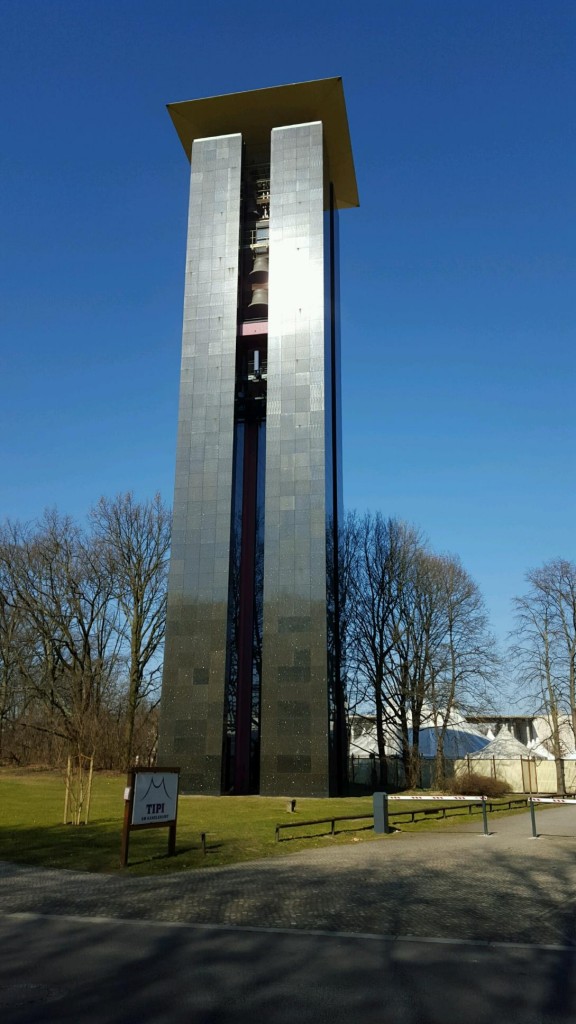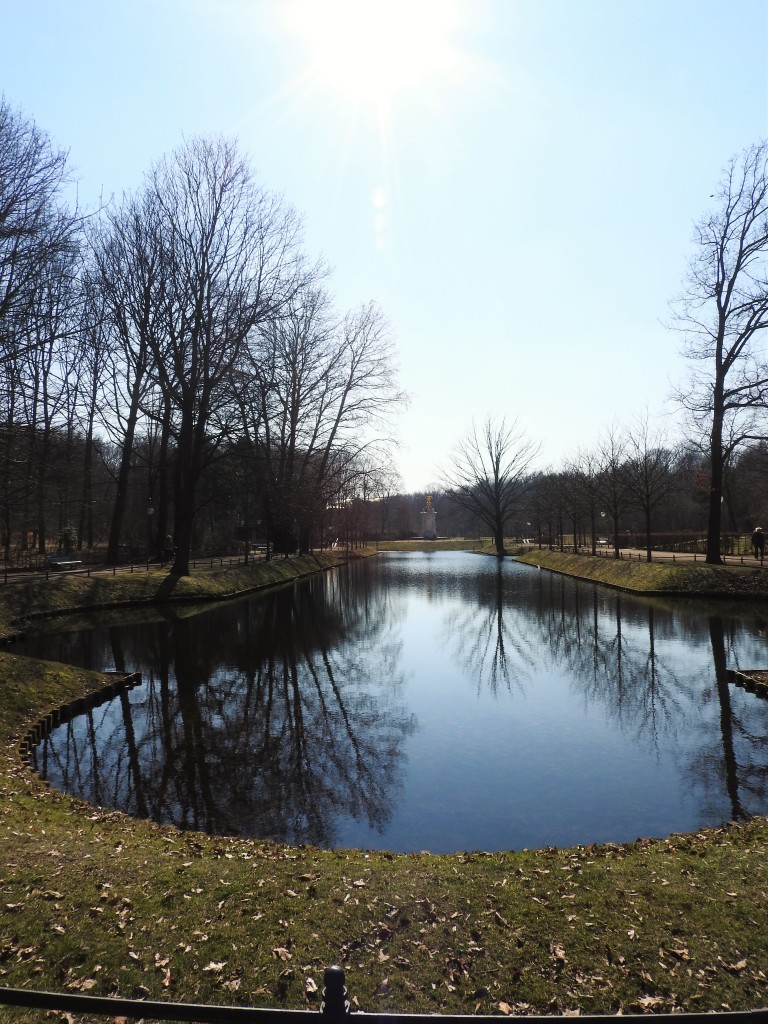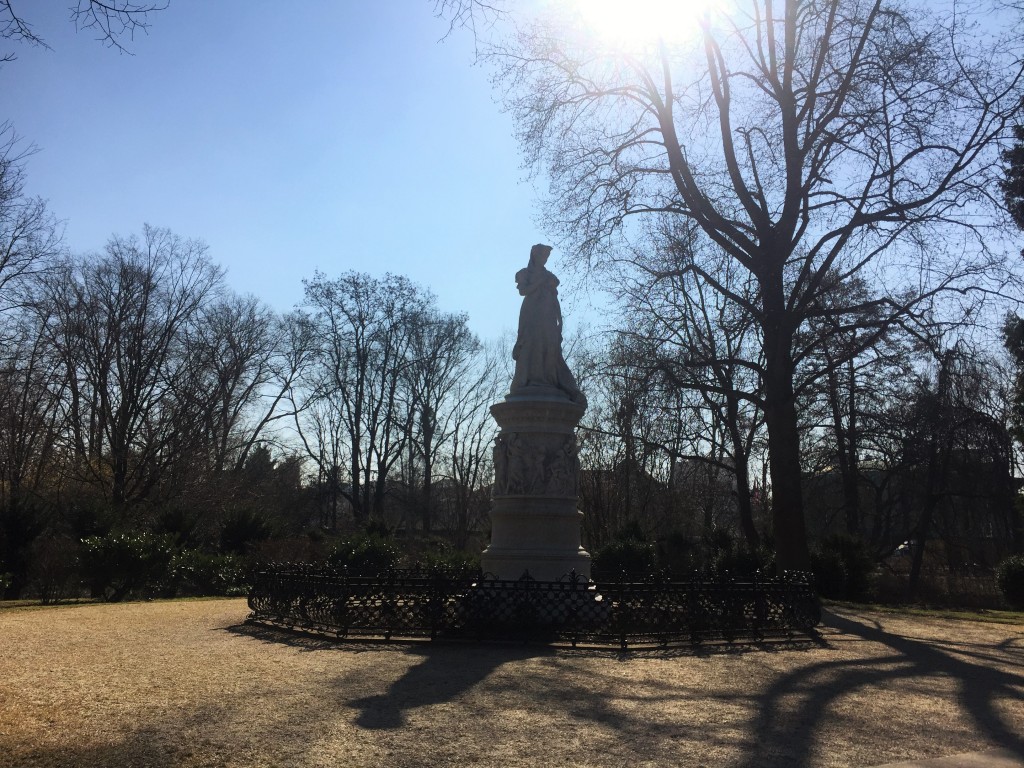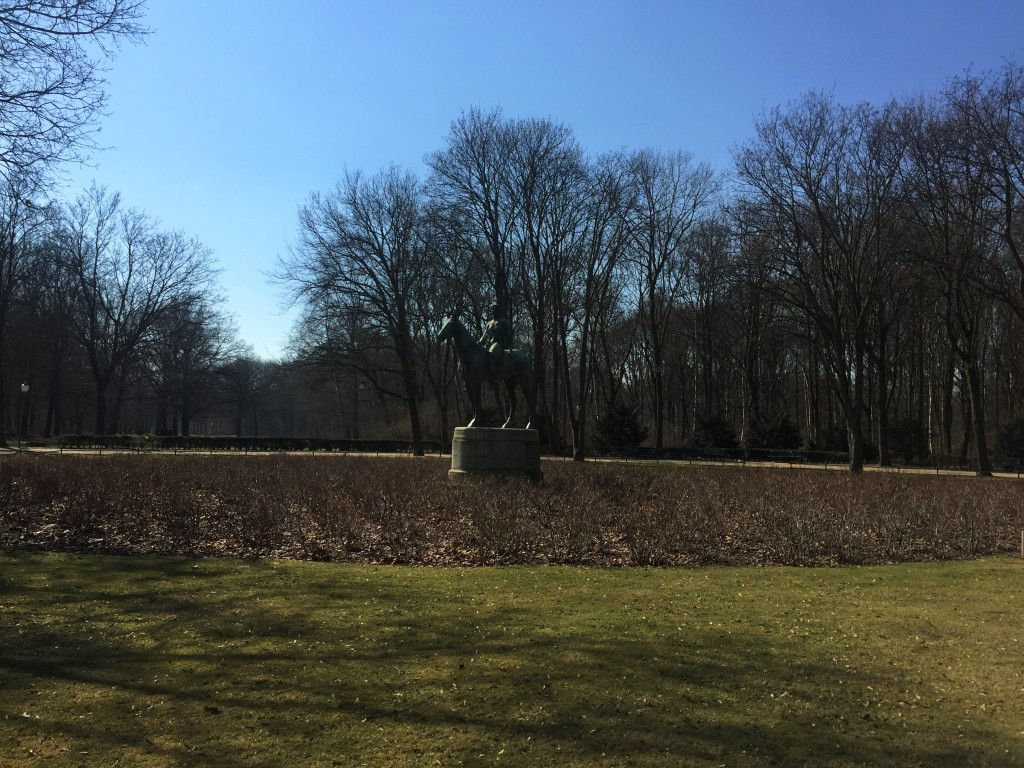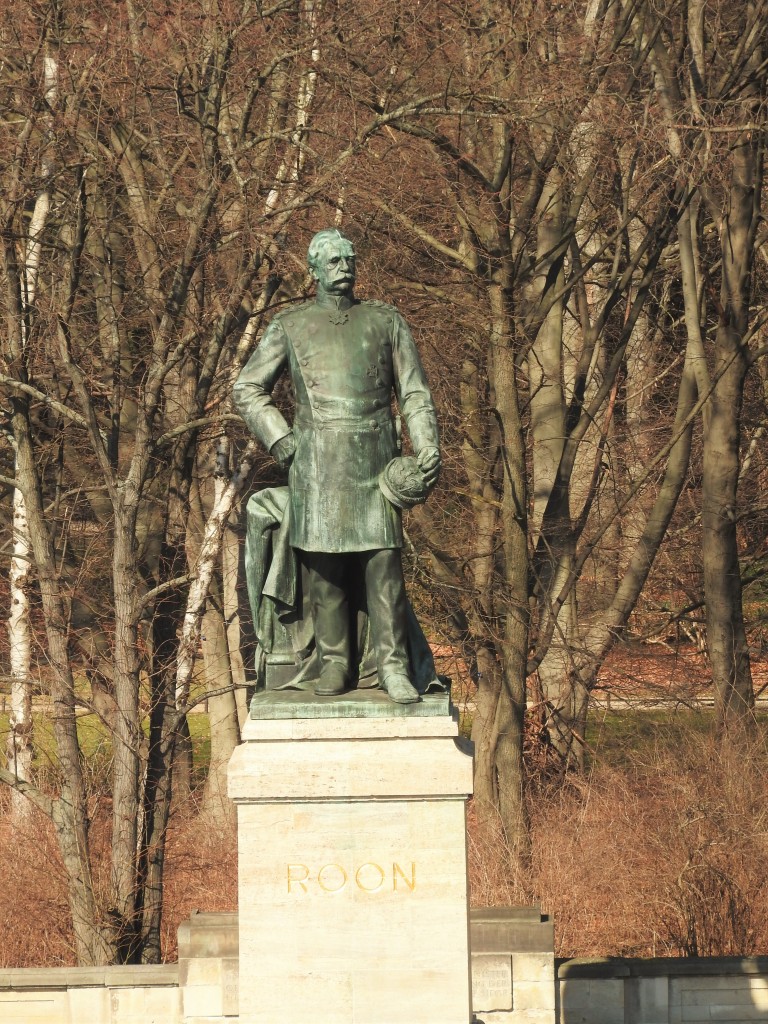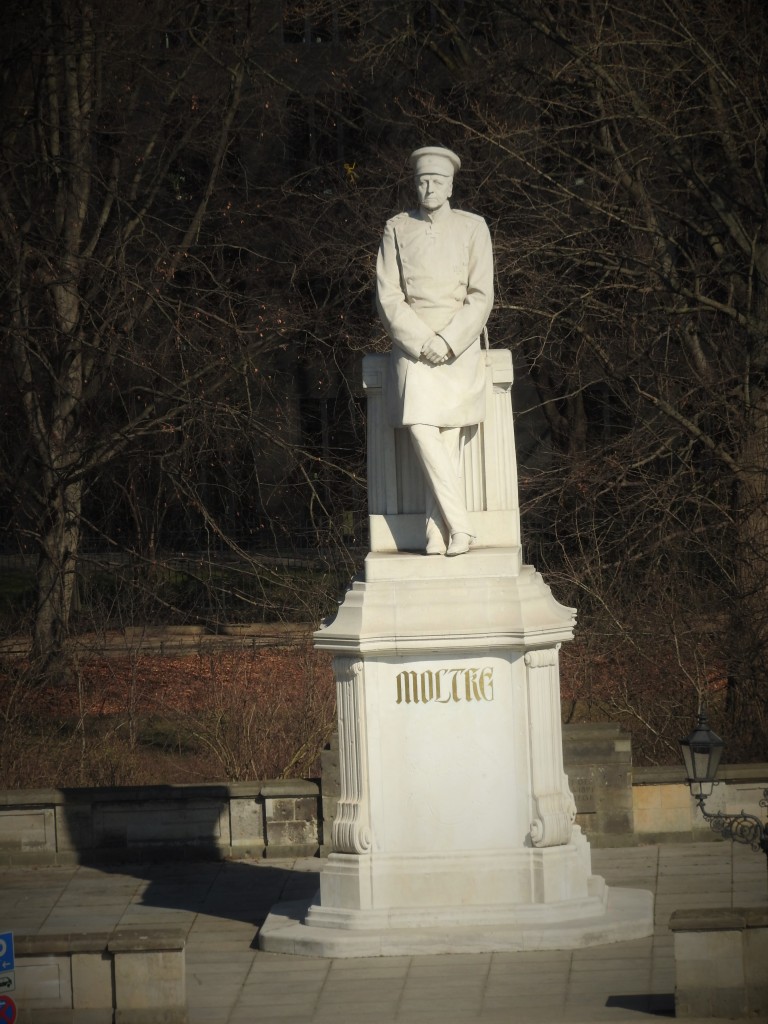Grosser Stern and Siegessäule
Designed by Friedrich Drake, the Siegessäule was constructed to commemorate three Prussian victories within one decade. The Siegessäule, or Victory Column, is topped with an 8-metre high golden statue, the Quadriga, celebrating the goddess of victory, Victoria. When the redevelopment of Platz der Republik began, the column was relocated to Großer Stern in 1938 and Hitler added an additional column to the height of the statue. During the same year, the Bismarck Monument, the Moltke monument, and the sculpture of Minister von Roon were also brought from Platz der Republik to Großer Stern, forming the “Forum of the Second Reich”. The Großer Stern has been a meeting place for Berliners since the 18th century.
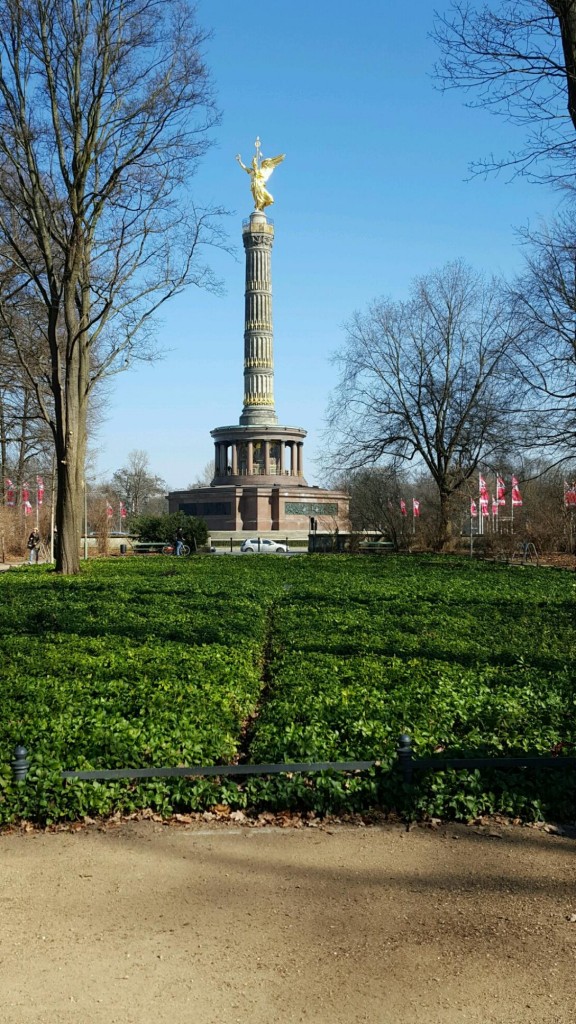
Photo of Grosser Stern and Siegessäule © Kaylin Reddick
Carillon
Near the House of World Cultures stands a Glockenspiel 42 meters high, the largest in Europe, dedicated to Berlin for the city’s 750th anniversary on October 27, 1987. The tower is made of Labrador stone and the architects Bangert, Jansen, Scholz and Schultes constructed the tower to honor the destroyed carillons in Potsdam during World War II. The Instrument inside the bell tower was designed by Jeffery A. Bossin, an American musicologist and the carillonneur. The 68 bells inside are set each day with computer controlled pieces, along with concerts every Sunday and certain holidays.
Photo of the Carillon © Kaylin Reddick
Venusbassin
Created by von Knobelsdorff, the rectangular pool was originally decorated with a statue of Venus with Cupid. By Emperor William II’s request, the Venus of Capua statue was replaced by the Musikerdenkmal, or Musician’s Memorial, during the 20th century. In 2009, the Venusbassin was restored, and in homage to Lenné, red flowering chestnut trees frame the pool.
Photo of Venusbassin © Jasmine Welch
Luiseninsel
At the young age of 16, Princess Louise was married to Prince Wilhelm and not long after in 1797 became King and Queen of Prussia. The family oriented Queen soon became known for her beauty, wit and grace and was able to put it to use in 1804. After multiple violations of the Prussian treaty rights by Napoleon, the Queen along with Russia and Austria allied against him. Resolutions were not met and a peace treaty had to be signed. The mother of ten son died after and was unable to see the empire built by Prussia and the consequential defeat of Napoleon.
In the southern portion of the Tiergarten stands a small island surrounded by a stream near Tiergarten Strasse referred to as Luiseninsel. Here monuments of King Friedrich Wilhelm III and Queen Louise were erected when the couple returned from exile in 1809. After a statue of Friedrich Wilhelm III had been erected in 1849 near the altar, it was possible to construct a statue for Queen Louise straight ahead from it in 1880. The statue was designed by Erdmann Encke and made of marble. After the statue was damaged, it was replaced by a concrete copy but was unable to withstand the weathering conditions. Finally in 2013, the original was restored and returned to its original place.
.
Photo of Queen Luise Monument & King Frederick William III Monument © Jasmine Welch
Floraplatz
In 1906, the statue Reitende Amazone, Riding Amazon, by sculptor Louis Tuaillon replaced the original statue of the goddess Flora in the center. Sculptures of animals by Rudolf Siemering were originally located here and were moved after World War II. The Floraplatz was restored in 2001.
Photo of Floraplatz © Jasmine Welch
Albrecht von Roon Monument
Count von Roon or “The King of Sergeant” as he liked to be referred to became The Prussian minister of war in 1859. Here he joined Bismarck and Moltke to create defining power. The minister of War was in charge of reorganizing the army. He ran the basis of his power off of general Scharnhorst’s system, “Nation in arms” which simply met as long as there was a country to defend, they were going to defend it. Because of his and Moltke’s work with the army, they were directly responsible for the victories over Denmark, Austria and France continuing the Prussian and German empire.
Photo of Roon Monument © Jasmine Welch
Helmuth von Moltke Monument
In 1857, a new chief of Prussian and German general staff was appointed. For 13 years, Moltke along with Bismarck and Roon created the great triumvirate that completely changed the way people looked at the map of Europe. Moltke’s desire was to revolutionize the concept of war. The way to do this was through the railroad system. He understood how important transportation and movement of men and supplies were to war, especially when battles went on throughout the year in sweltering/scorching and fidget temperatures. The gain of power that was received came from the amazing ability to recognize the weaknesses after their defeat and come together to fix them immediately. Because of this, the victories of 1866, 1870 and 1871 were examples of why every other army was modeling off theirs.
Photo of Moltke Monument © Jasmine Welch
